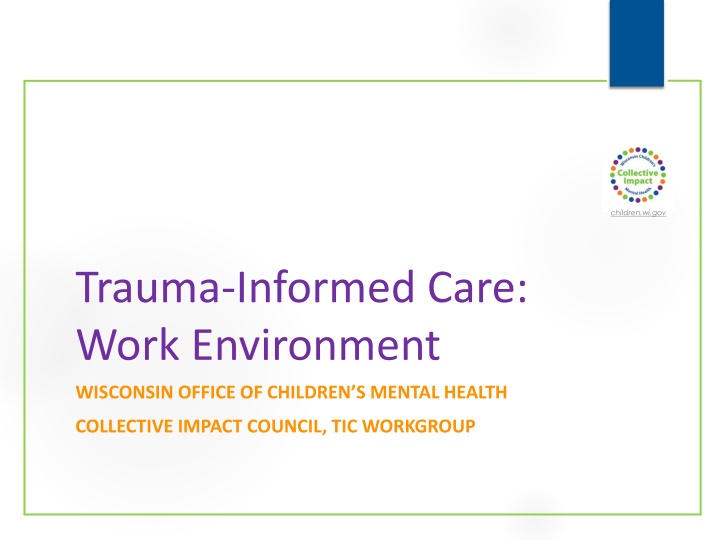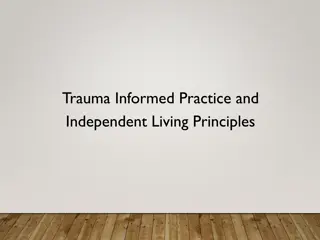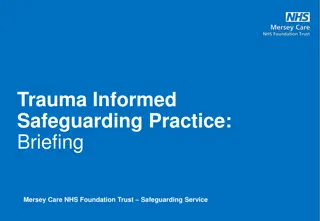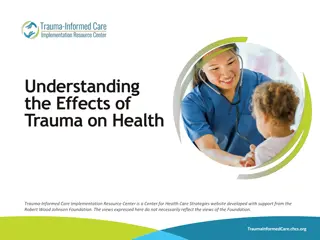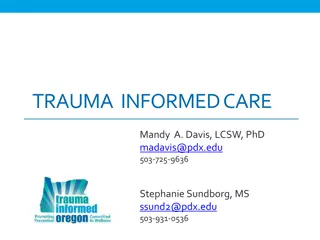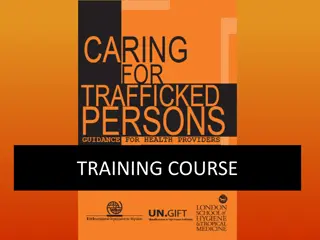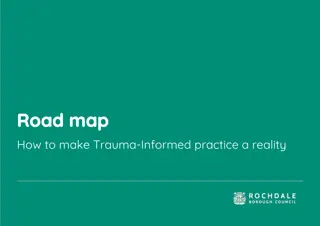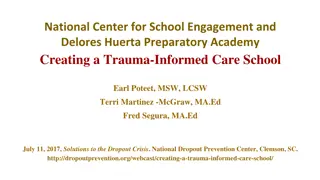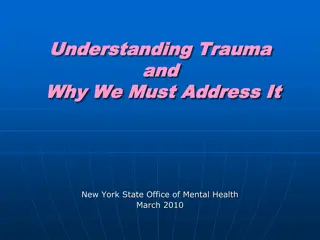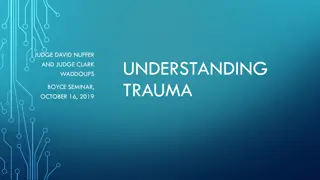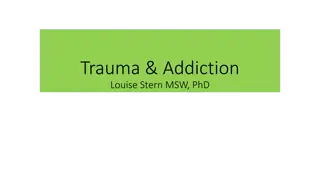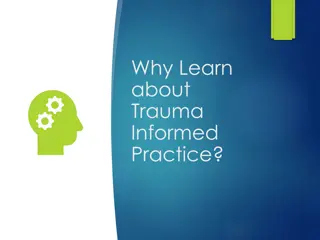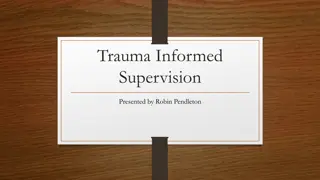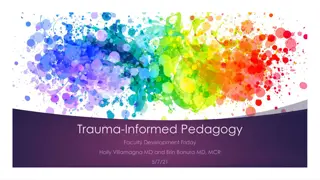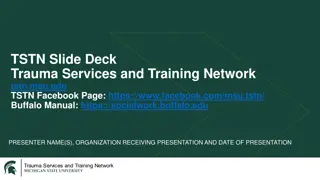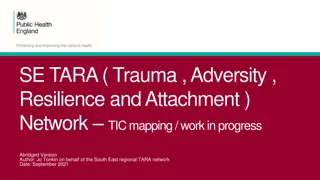Trauma-Informed Care in Work Environment
Transforming agencies into trauma-informed environments involves key principles like trauma understanding, safety, cultural humility, compassion, collaboration, and resilience. This approach focuses on staff training, consumer empowerment, and a responsive, supportive environment. By incorporating these fundamentals, organizations can enhance trust, foster healing, and promote recovery among individuals in need.
Download Presentation

Please find below an Image/Link to download the presentation.
The content on the website is provided AS IS for your information and personal use only. It may not be sold, licensed, or shared on other websites without obtaining consent from the author.If you encounter any issues during the download, it is possible that the publisher has removed the file from their server.
You are allowed to download the files provided on this website for personal or commercial use, subject to the condition that they are used lawfully. All files are the property of their respective owners.
The content on the website is provided AS IS for your information and personal use only. It may not be sold, licensed, or shared on other websites without obtaining consent from the author.
E N D
Presentation Transcript
children.wi.gov Trauma-Informed Care: Work Environment WISCONSIN OFFICE OF CHILDREN S MENTAL HEALTH COLLECTIVE IMPACT COUNCIL, TIC WORKGROUP
Overview of TIC Implementation Fundamentals of a trauma-informed agency Ongoing self-assessment and re-assessment
Six Core Principles 1. Trauma Understanding 2. Safety and Security 3. Cultural Humility and Responsiveness 4. Compassion and Dependability 5. Collaboration and Empowerment 6. Resilience and Recovery
1. Trauma Understanding Are staff trained in principles of TIC and systems Are consumer symptoms understood as a person s best and only solution to cope? Do public areas and behavior cultivate a healing environment?
(Continued) 1. Trauma Understanding Are TIC evidence-based or emerging best practices utilized? Are hiring practices, policies and procedures, contracts, etc. trauma-informed?
2. Safety and Security Are environments welcoming (a greeter, clean comfortable seating, appropriate unobtrusive security)? Do all staff understand that trust must be earned, not assumed? Are relationships with consumers strength-based and collaborative?
(Continued) 2. Safety and Security Are there positive working relationships that provide support and calm in times of stress? Does the program provide clear information on goals including what, when, by whom, why, under what circumstances and at what cost they will be achieved?
3. Cultural Humility and Responsiveness Does the d cor reflect the colors, textiles and images of cultural/ethnic populations served by the program? Does staff understand that consumers from different cultures may react differently and/or hold different cultural beliefs?
(Continued) 3. Cultural Humility and Responsiveness Are educational and resource materials made available in the county s threshold languages? Is the program s telephone greeting available in languages in addition to English? Are the diversity cultural/healing rituals honored? Do program policies support cultural humility and responsiveness?
4. Compassion & Dependability Does all staff seek to develop secure and dependable relationships characterized by mutual respect and attunement? Does staff communicate in ways that are clear, inclusive and useful to others? Are routines, rituals, and consistent practices embedded into staff meetings, calendars and the organization?
4. Compassion & Dependability (Continued) Does staff communicate in ways that promote dependability and foster trust? Is the staff role, scope and availability clearly communicated to consumers?
5. Collaboration and Empowerment Are relationships with consumers strength-based and collaborative (e.g. the consumer is not a passive recipient, staff is an ally, not a caretaker)? How much choice does each consumer have over what services she or he receives? How much choice does each consumer have over when, where and by whom the service is provided (e.g.
(Continued) 5. Collaboration and Empowerment Does the consumer choose how contact is made (e.g. by phone, mail, to home or other address)? Do consumers have a significant role in planning and evaluating the agency s services? Do consumer-survivor advocates have a significant advisory voice in the planning and evaluation of services? In routine service provision, how are each consumer s strengths and skills recognized?
6. Resilience and Recovery Does the program communicate a sense of realistic optimism about the capacity of consumers to reach their goal? How does staff support and demonstrate their commitment to wellness? Does staff recognize the value of instilling hope by seeking to develop a clear path towards wellness that addresses stress and trauma?
(Continued) 6. Resilience and Recovery What types of practices are utilized that promote a strength-based workplace environment? What policies are focused on building a strength-based workplace environment? Do services proactively identify and apply strengths to promote wellness and growth, rather than focusing singularly on symptom reduction? Source: Alameda County Behavioral Health Care Services, 2013
Self-Assessment Tools Use tools provided in the Resources Guide to begin and continually reassess the implementation of your plan. Evaluate on a recurring bases the ability of your plan to meet the needs of your consumers. Institute quality improvement measures as needs and challenges arise.
(Continued) Self-Assessment Tools Institute practices that support sustainability: o Ongoing training o Clinical supervision o Consumer participation and feedback o Resource allocation
